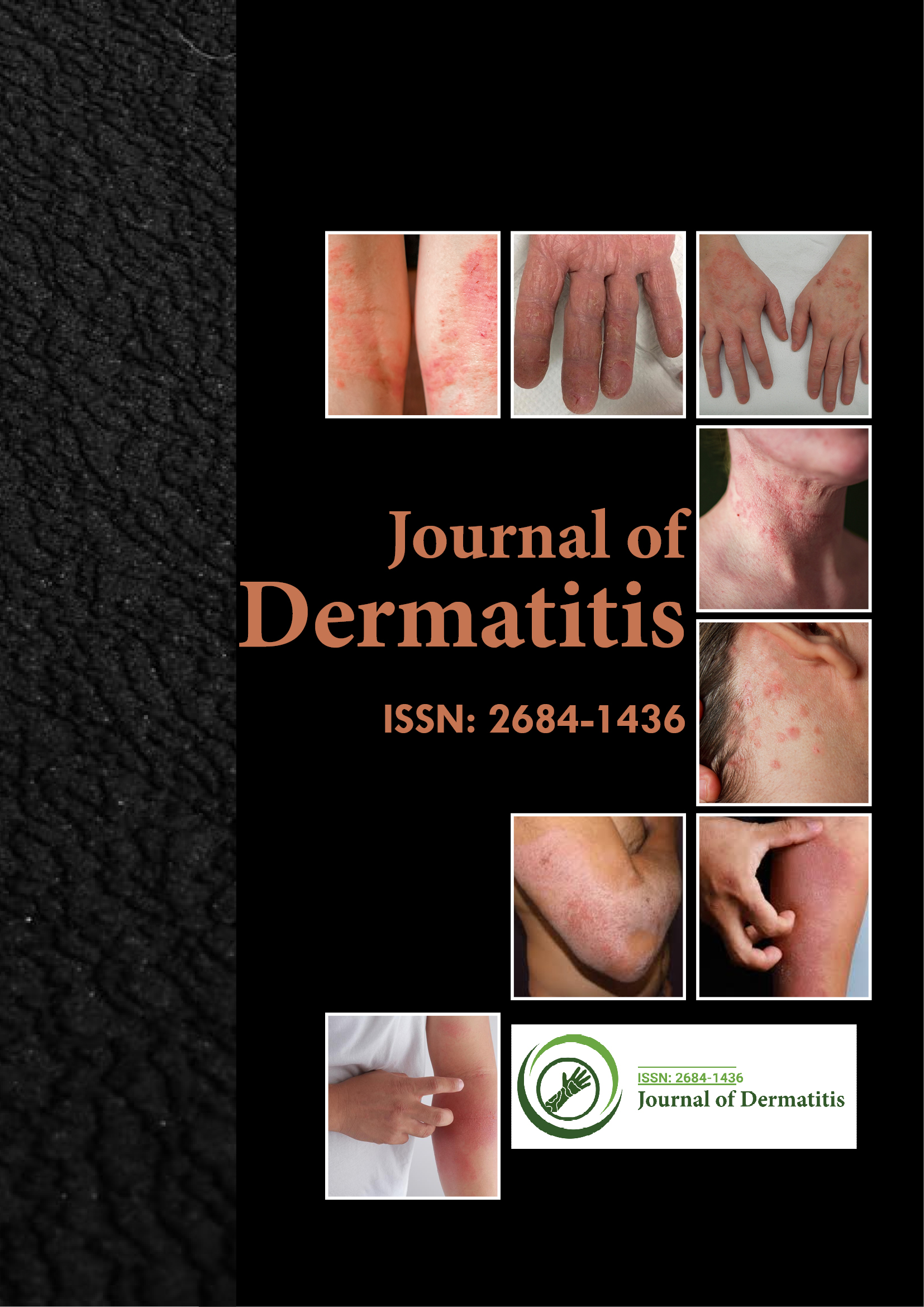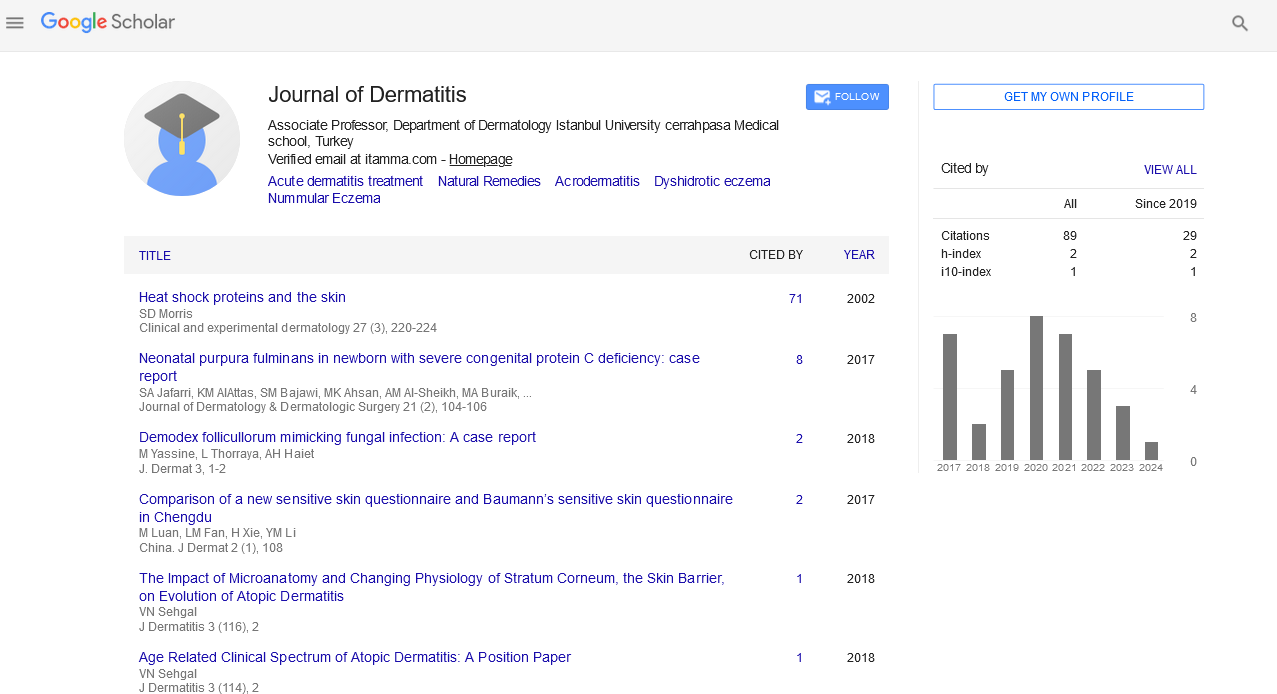Indexed In
- RefSeek
- Hamdard University
- EBSCO A-Z
- Euro Pub
- Google Scholar
Useful Links
Share This Page
Journal Flyer

Open Access Journals
- Agri and Aquaculture
- Biochemistry
- Bioinformatics & Systems Biology
- Business & Management
- Chemistry
- Clinical Sciences
- Engineering
- Food & Nutrition
- General Science
- Genetics & Molecular Biology
- Immunology & Microbiology
- Medical Sciences
- Neuroscience & Psychology
- Nursing & Health Care
- Pharmaceutical Sciences
The use of IR microspetroscopy in skin permeability research
22nd World Dermatology Congress
September 27-28, 2021 | Webinar
Randa SH. Mansour
Philadelphia University School of Pharmacy, Jordan
Scientific Tracks Abstracts: J Dermatitis
Abstract:
The skin is composed of three layers of heterogeneous composition and structure. They are from the deepest part to the surface: hypodermis (subcutaneous tissue), dermis, and epidermis .The stratum corneum is the outermost 10-20 μm thick layer of epidermis and presents the primary barrier to the transport of chemicals across the skin due to its unique structure and organization. From pharmaceutical point of view, invistigating the penetration through skin and the permeability properties of the stratum corneum is particularely important for transdermal delivery of drugs. One of the most recent methods that can be used for this purpose is FT-IR microspectroscopy which combines FT-IR spectroscopy and optical microscopy. The IR microspectroscopic analysis allows intrensic visualization of substance penetration through human skin layers. Morever, monitoring changes in stratum corneum spectroscopic behavior corresponding to lipids and proteins can be done, thus refl ecting stratum corneum biochemical structure and accordingly, its permeability. This technique dictates the use of multivariate statistical analysis to accomplish the latter objective. The application of IR microscopy within this context will be illustrated.
Biography :
Randa Mansour has PhD degree in Pharmaceutical sciences from University of Jordan. She has research expertise in transdermal drug delivery in addition to the application of IR microscopy in many fi elds particularly skin research. She is an active member of the users community of SESAME sunchrotron/ Jordan, and has been a user in other synchrotrons including MAX/Sweden and ELLETRA/Italy. Currently she is an academic staff member and the Vice Dean of the Faculty of Pharmacy at Philadelphia University/ Joradan. She is also a IVPT consultant for a private sector pharmaceutical company.

